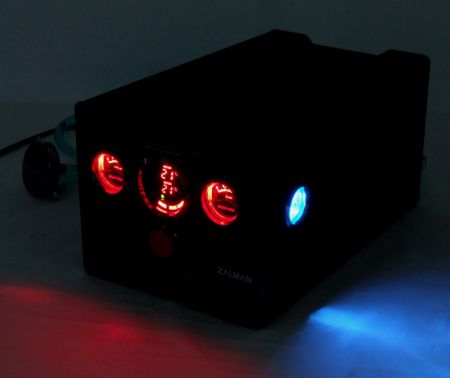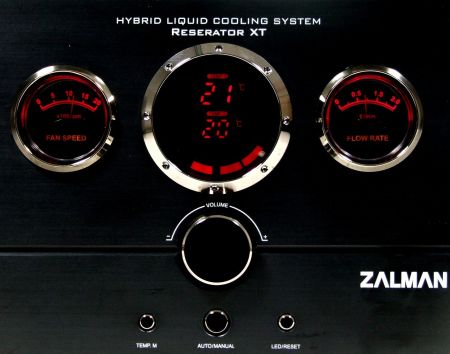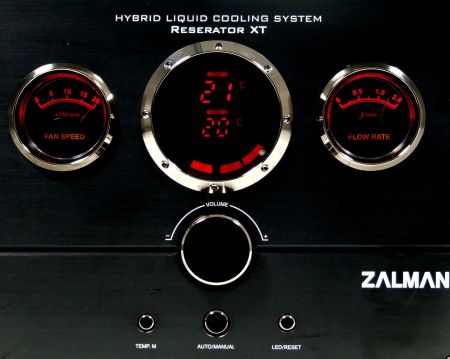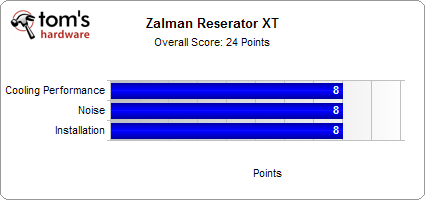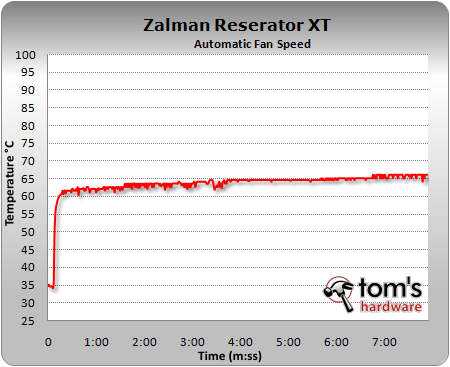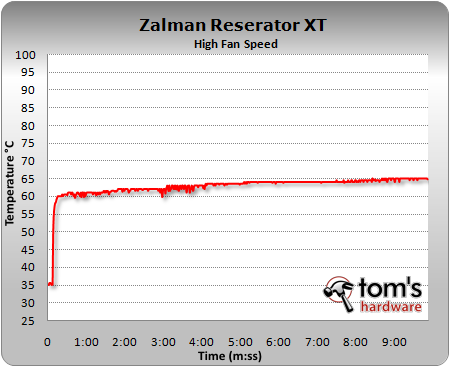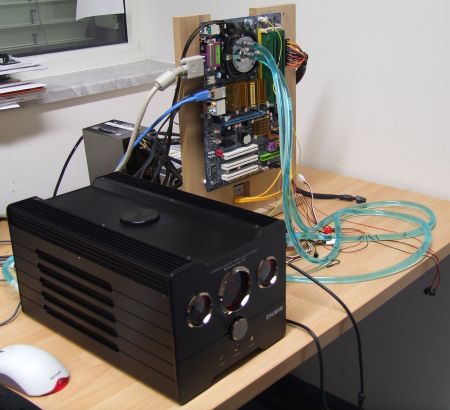CPU Cooler Charts 2008, Part 2
Zalman Reserator XT (Cont'd.)
Although fan speed can be adjusted manually, the default setting has the cooler running in Auto mode. This is also the mode the cooler automatically reverts to as soon as it is turned off - in other words, it is impossible to save a fan speed setting. Using a button, the backlighting of the display and the flow control on the cooler's faceplate can be turned off.
Reserator in the dark - the lighting effects can be switched off
Zalman's cooler does not have any way of reporting the fan speed or the water flow rate to the motherboard for monitoring. Should the cooler fail for any reason, it will alarm the user to this fact by beeping. The PC, on the other hand, can only recognize the failure indirectly through rising CPU temperatures.
We tested cooling performance with the cooler set to its standard Auto mode as well as at its maximum fan speed, which we set manually. Despite its larger size, the Reserator XT can't quite measure up to the MSI/Hydrogen solution even at its highest fan setting. At 45 db(A), the noise level is also far too high for a water-cooling solution.
Automatic cooling mode
Manual fan speed selection
However, in Auto mode, the CPU temperature is only marginally higher, and the Reserator actually offers cooling performance similar to that of the MSI/Hydrogen bundle. As an added bonus, the noise level is not at all bothersome in this mode either. As with any other water cooling solution, you'll need to ensure that the chipset and the CPU's voltage regulation modules are sufficiently cooled in some manner, as there is obviously no airflow from the CPU cooler.
Get Tom's Hardware's best news and in-depth reviews, straight to your inbox.
We don't recommend using the Reserator XT at the highest fan speed, since the noise level increases disproportionately to the amount of cooling improvement when compared to Auto mode.
At €350, the Reserator XT also costs much more than any of its predecessors. Considering its performance, the cooler is definitely too expensive, especially since Zalman didn't even think to include any kind of hardware monitoring functionality. The final score is based on the cooler's Auto mode.
| Technical Data | ||
|---|---|---|
| CPU | 100% load | idle |
| Temperature Auto | 66 °C | 35 °C |
| Temperature High | 65 °C | 35 °C |
| Noise | 45.1 dB(A) | 37.7 dB(A) |
| Fan Speed | 2000 RPM | 1200 RPM |
| Weight | 220 grams | Row 5 - Cell 2 |
| Intel Socket | 775 | Row 6 - Cell 2 |
| AMD Socket | AM2 | AM2+ |
| Row 8 - Cell 0 | 939 | 940 |
The Reserator XT in use with the test platform
Current page: Zalman Reserator XT (Cont'd.)
Prev Page Zalman Reserator XT - Heavy And Expensive Next Page Tom's Hardware Performance Results-
Great article, but it mentions testing over 80 coolers - but I see only about 15 in the test charts. Where, for example, is the Tuniq Tower T120??Reply
Thanks.
